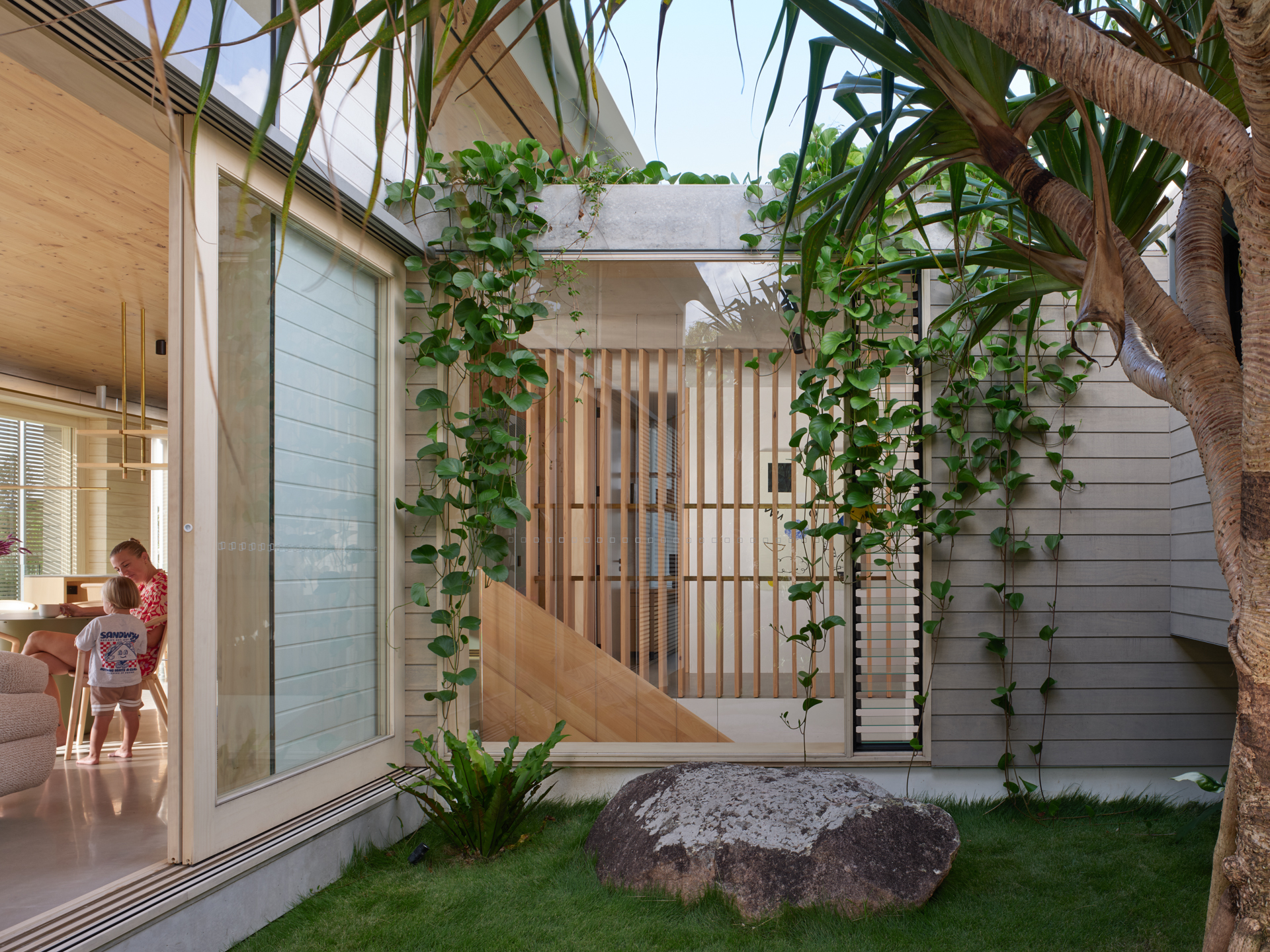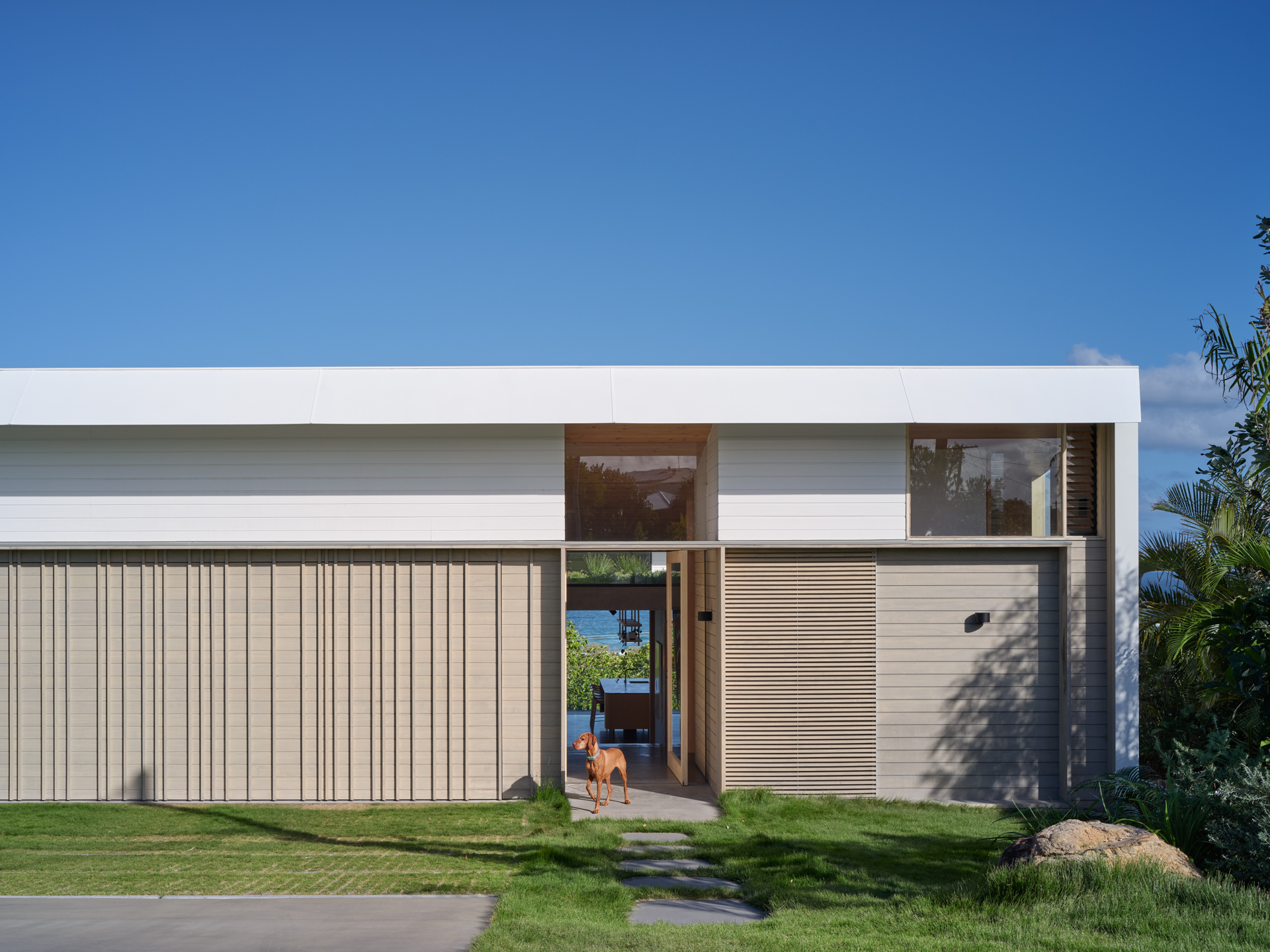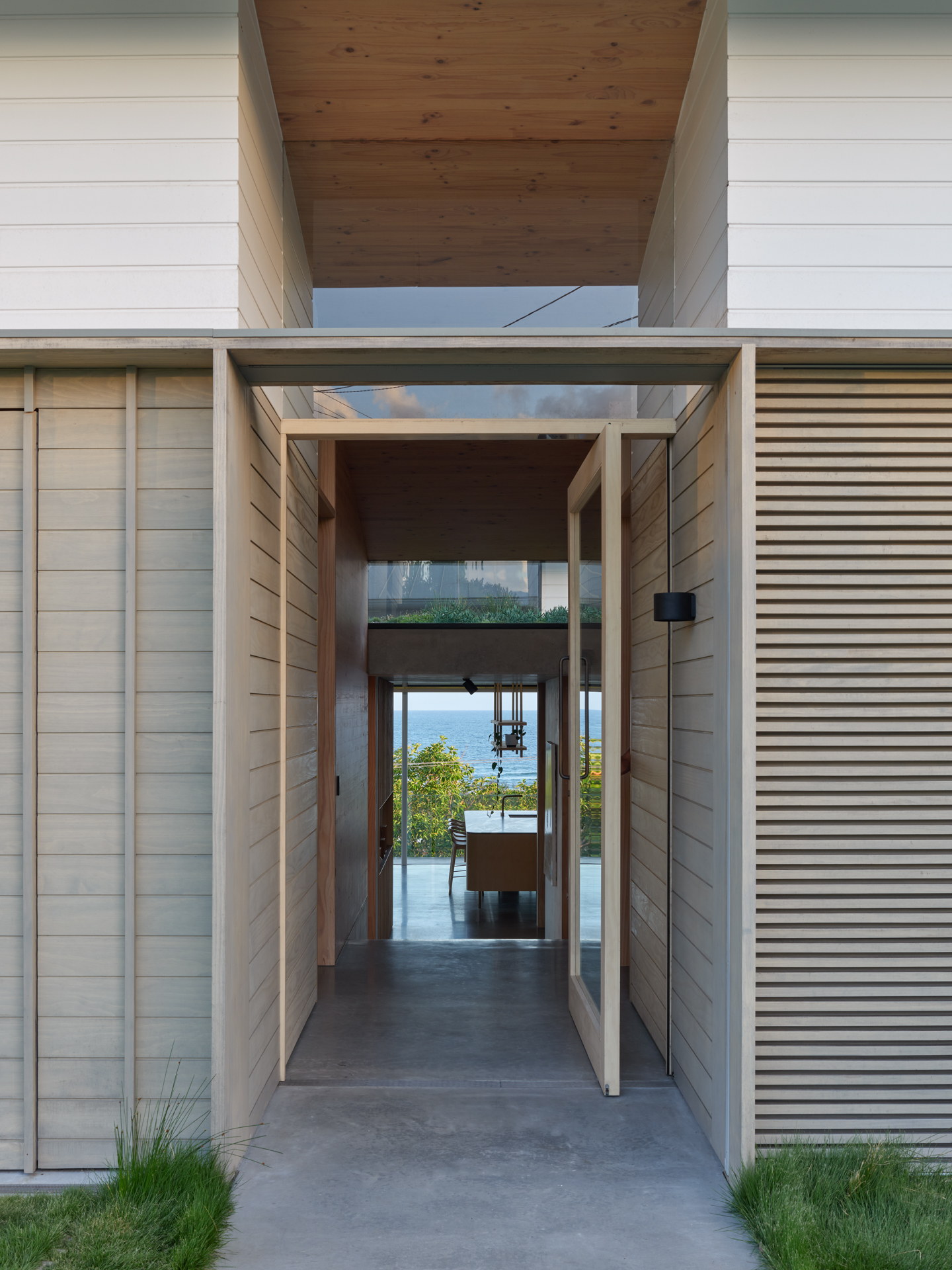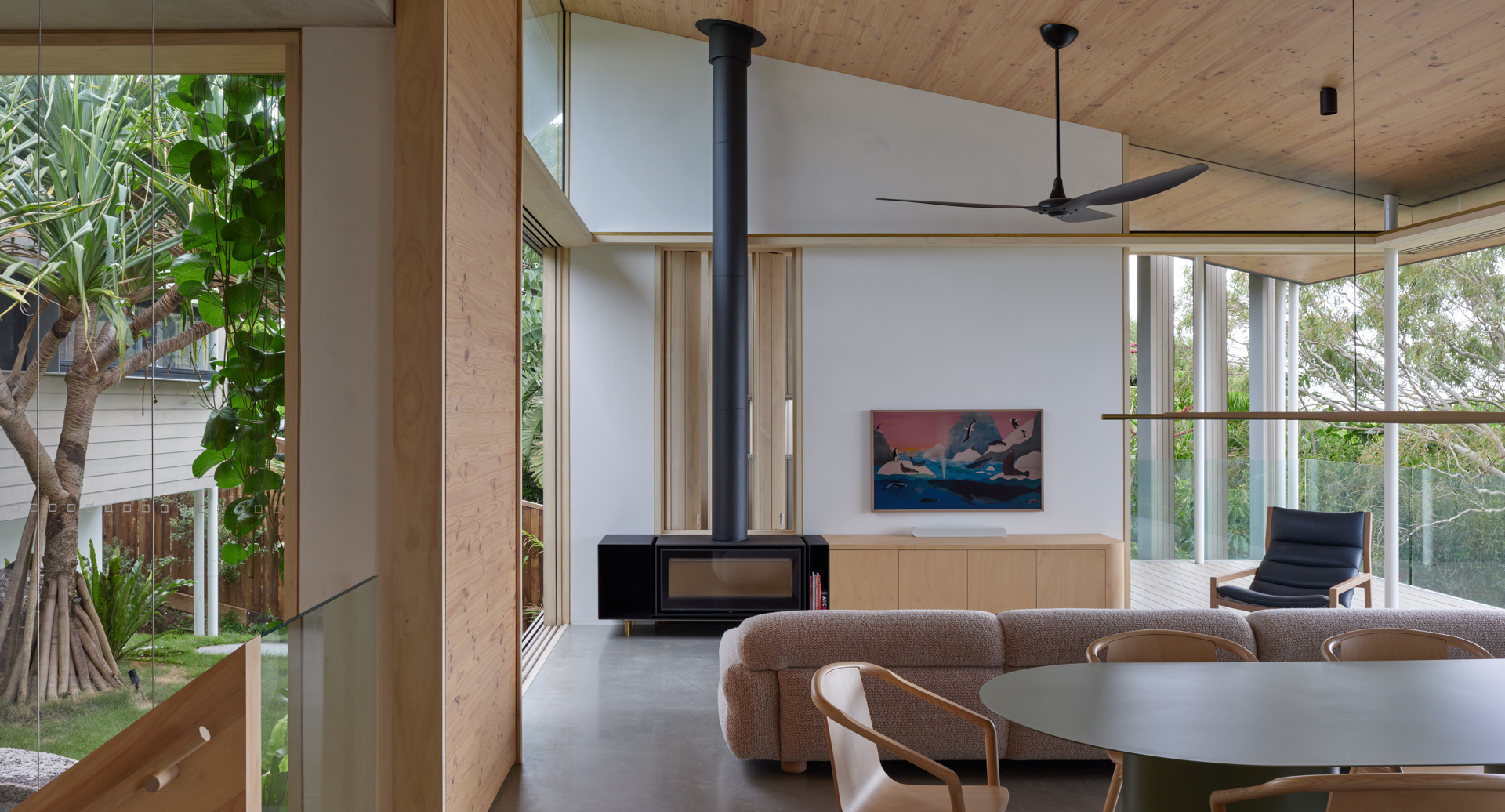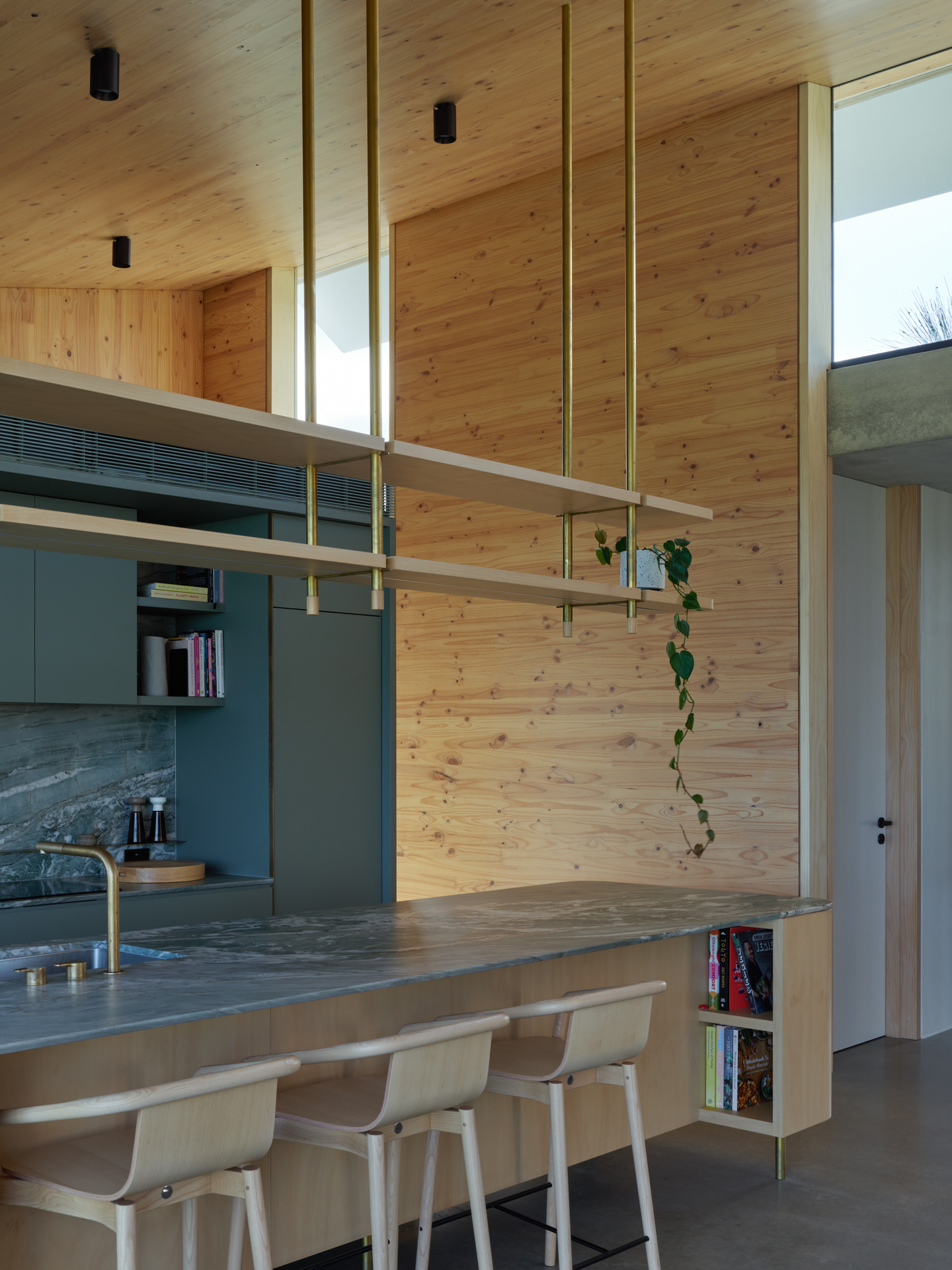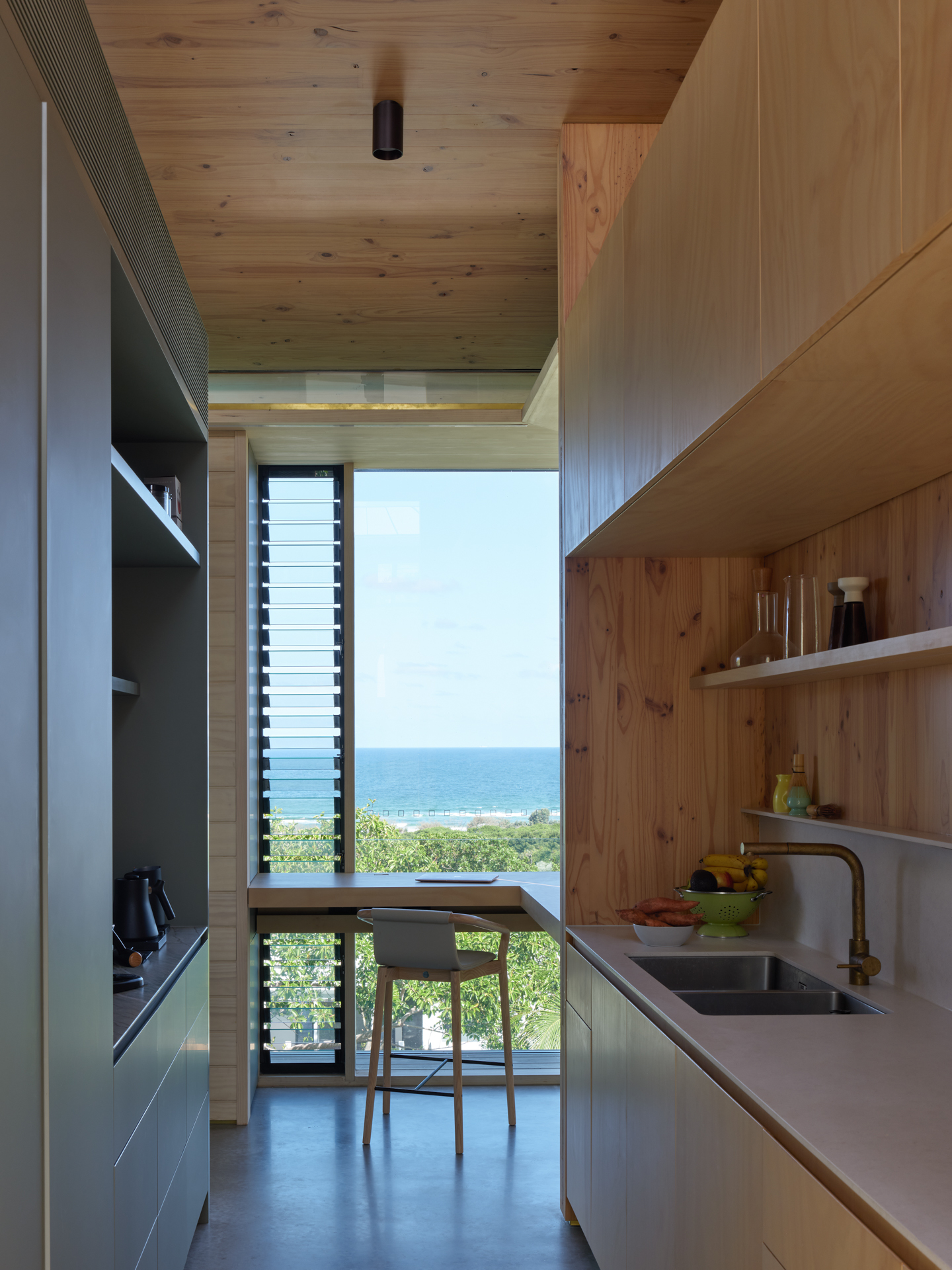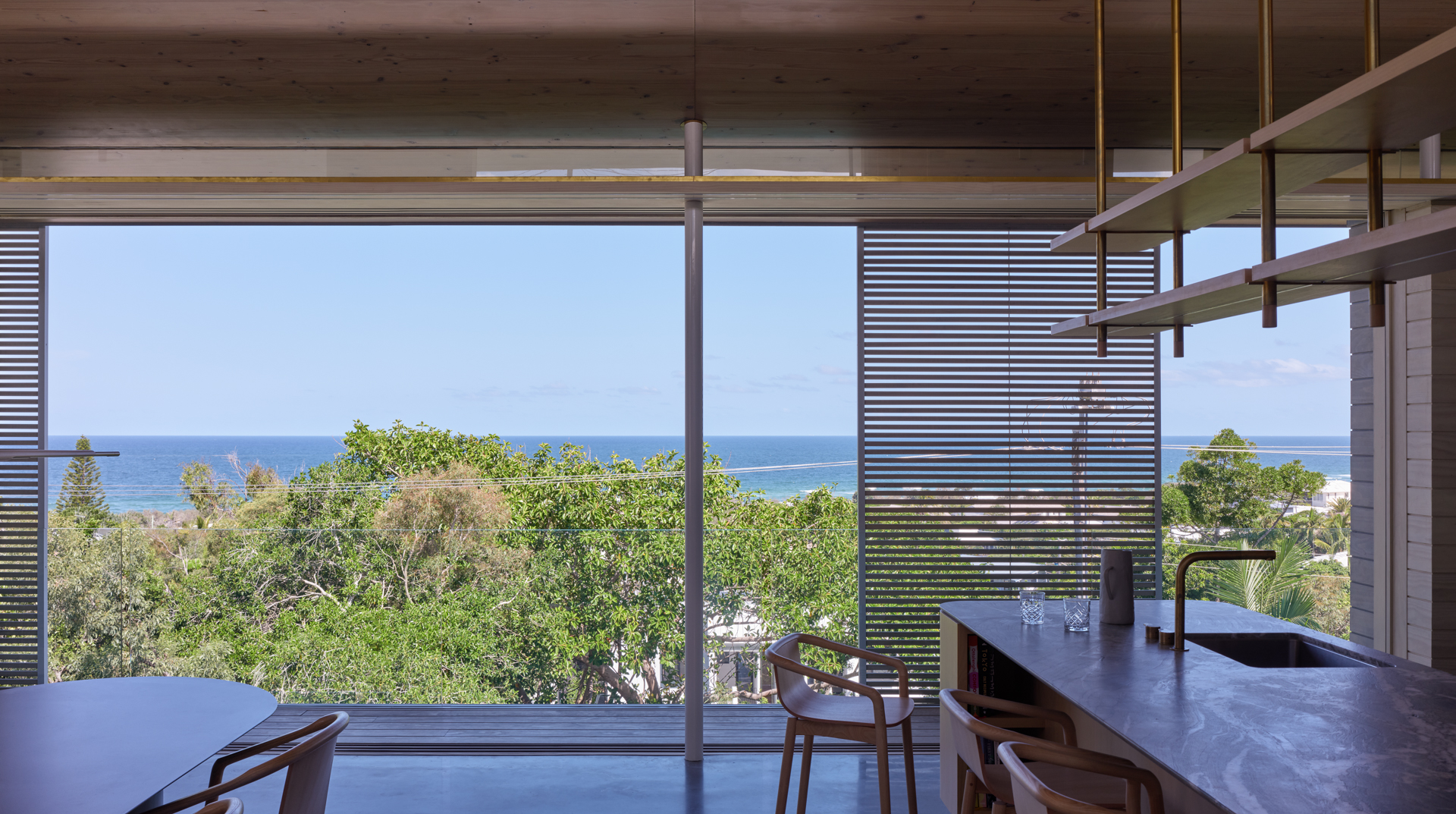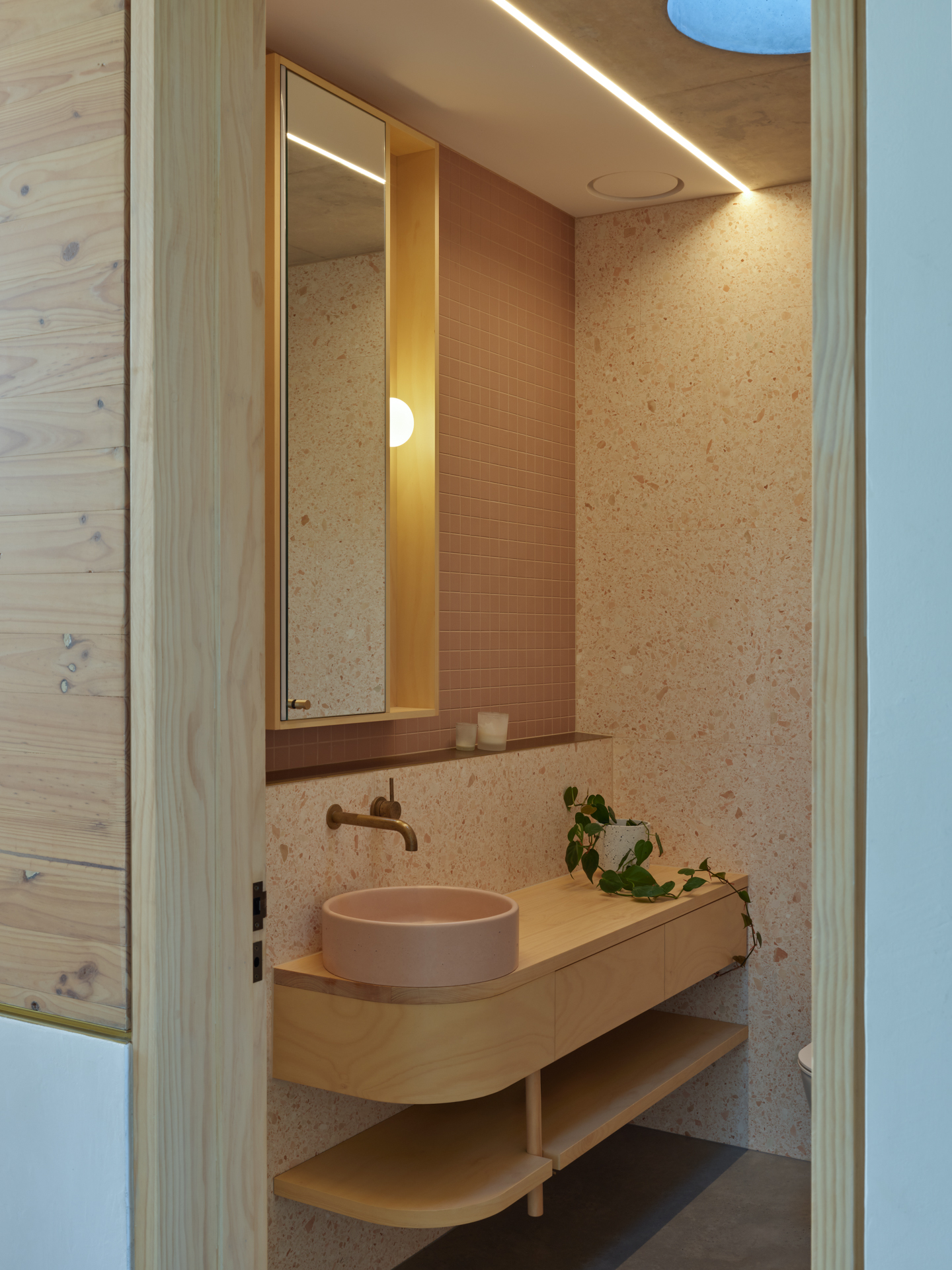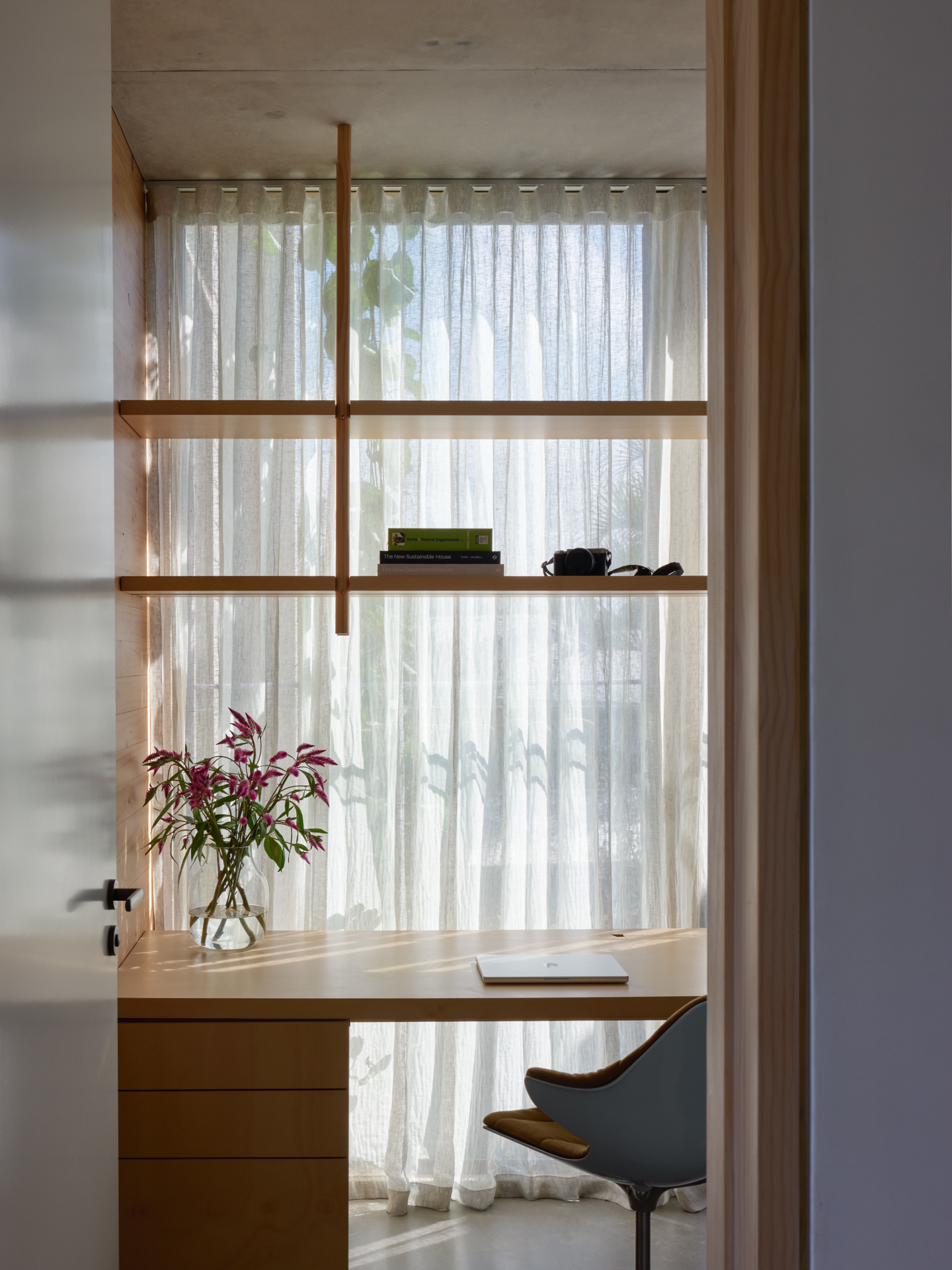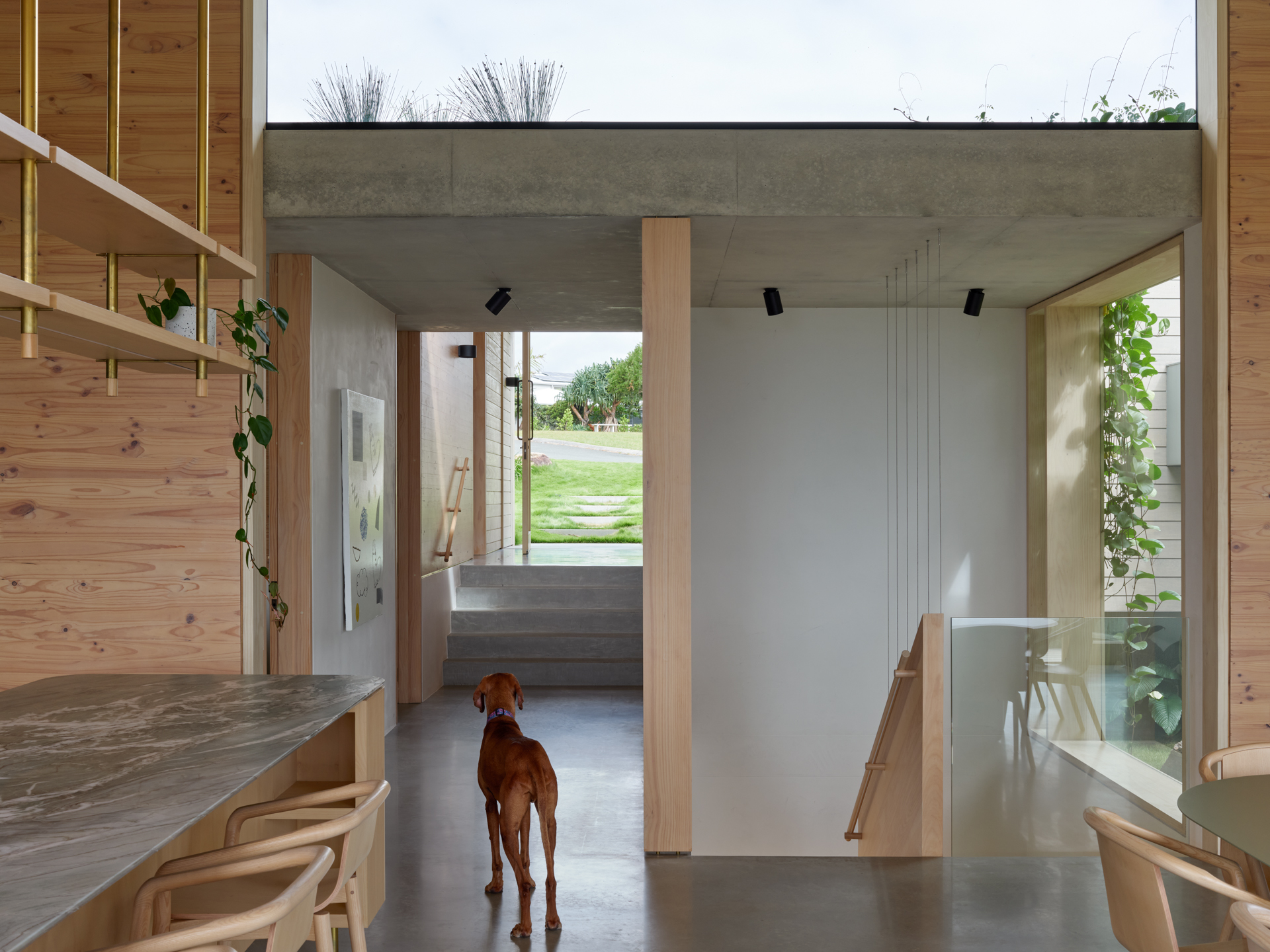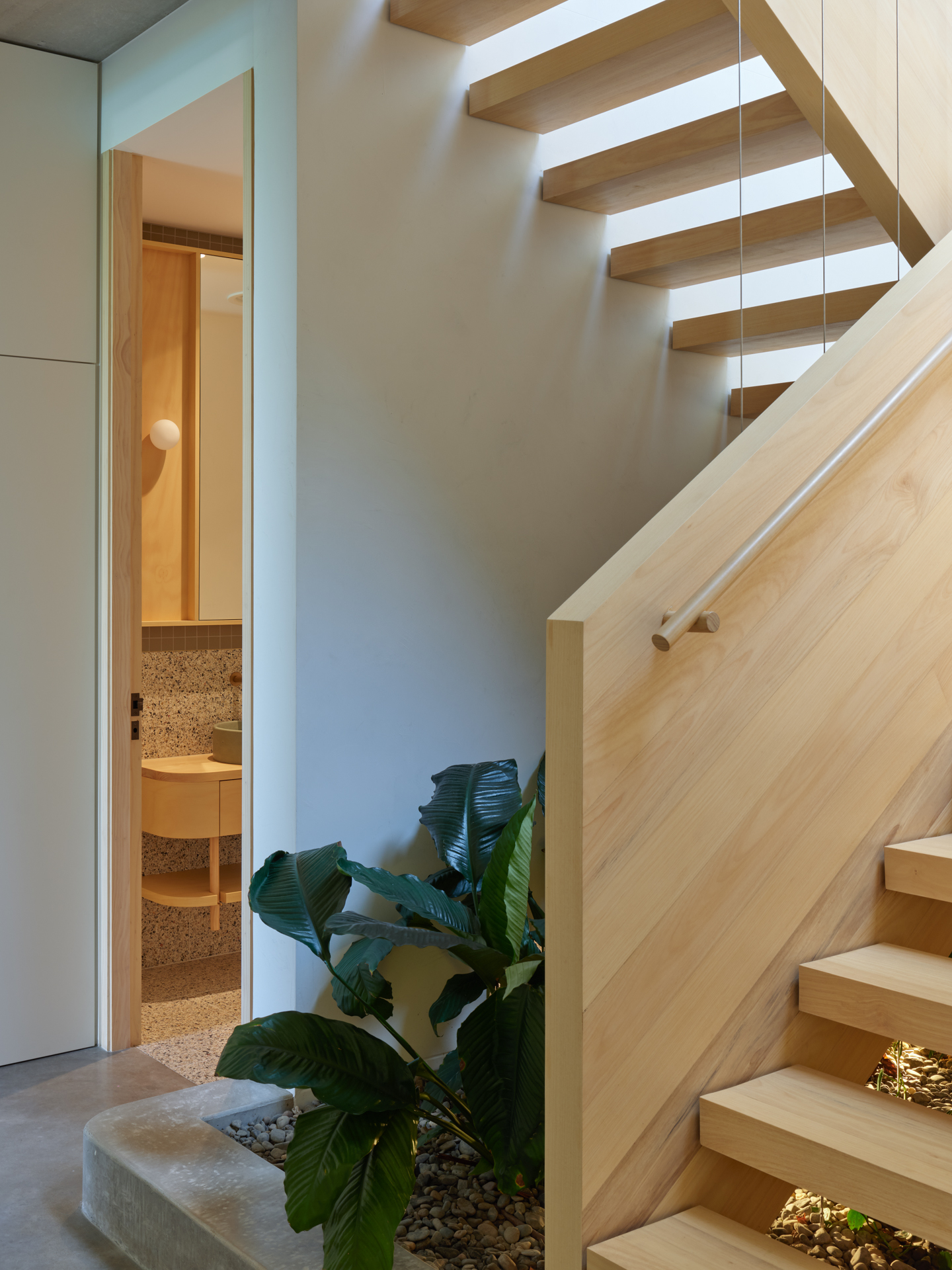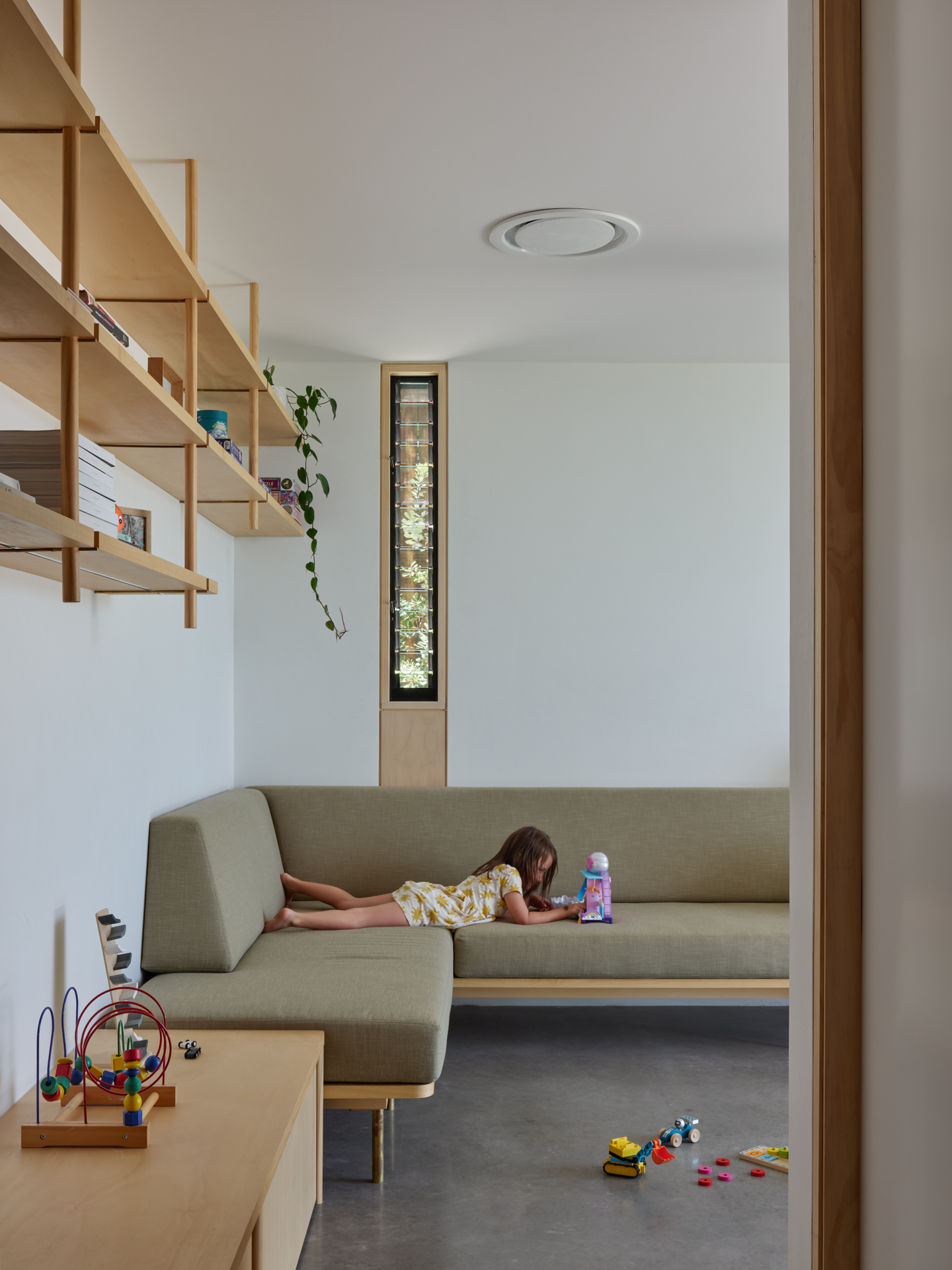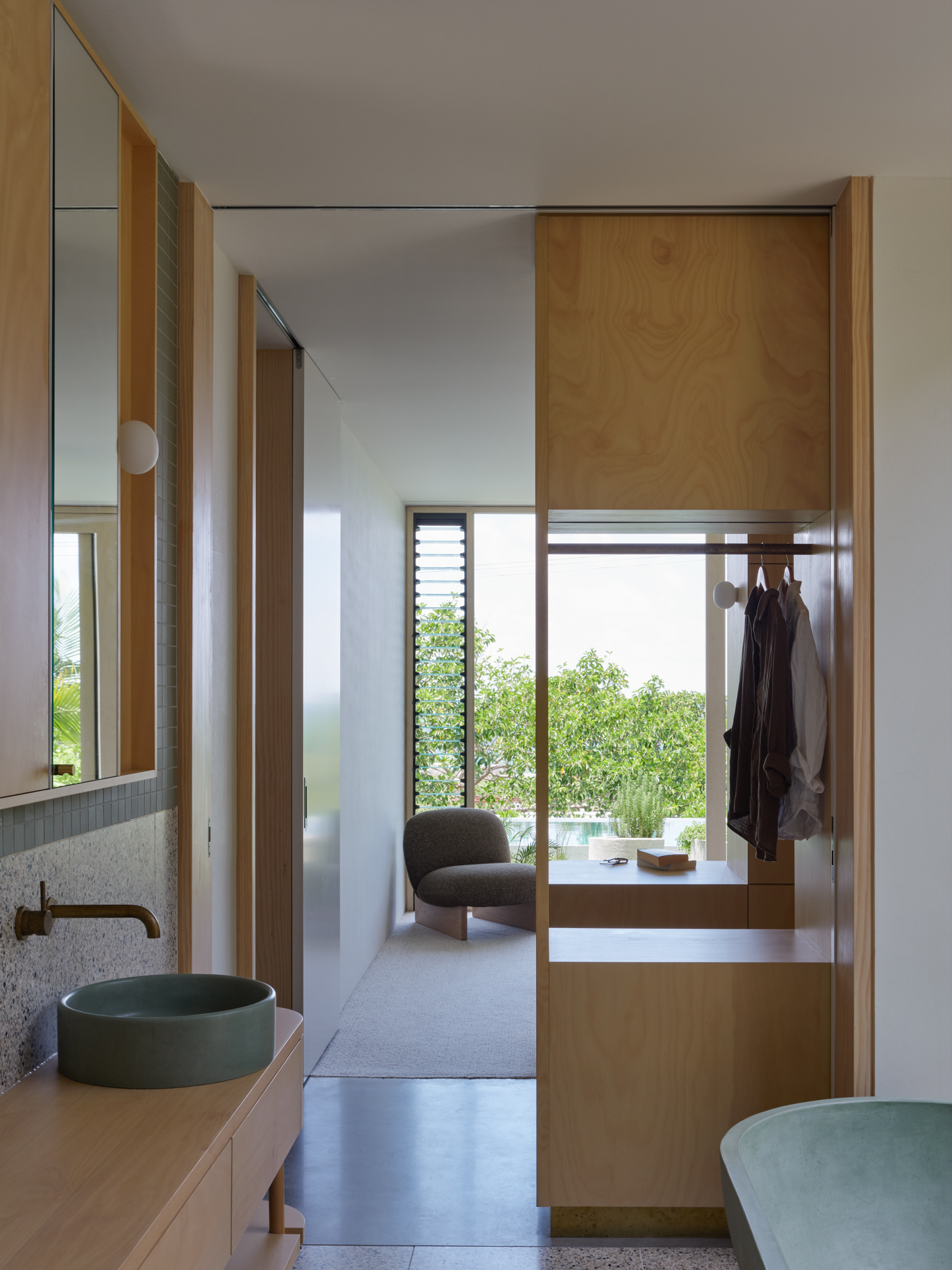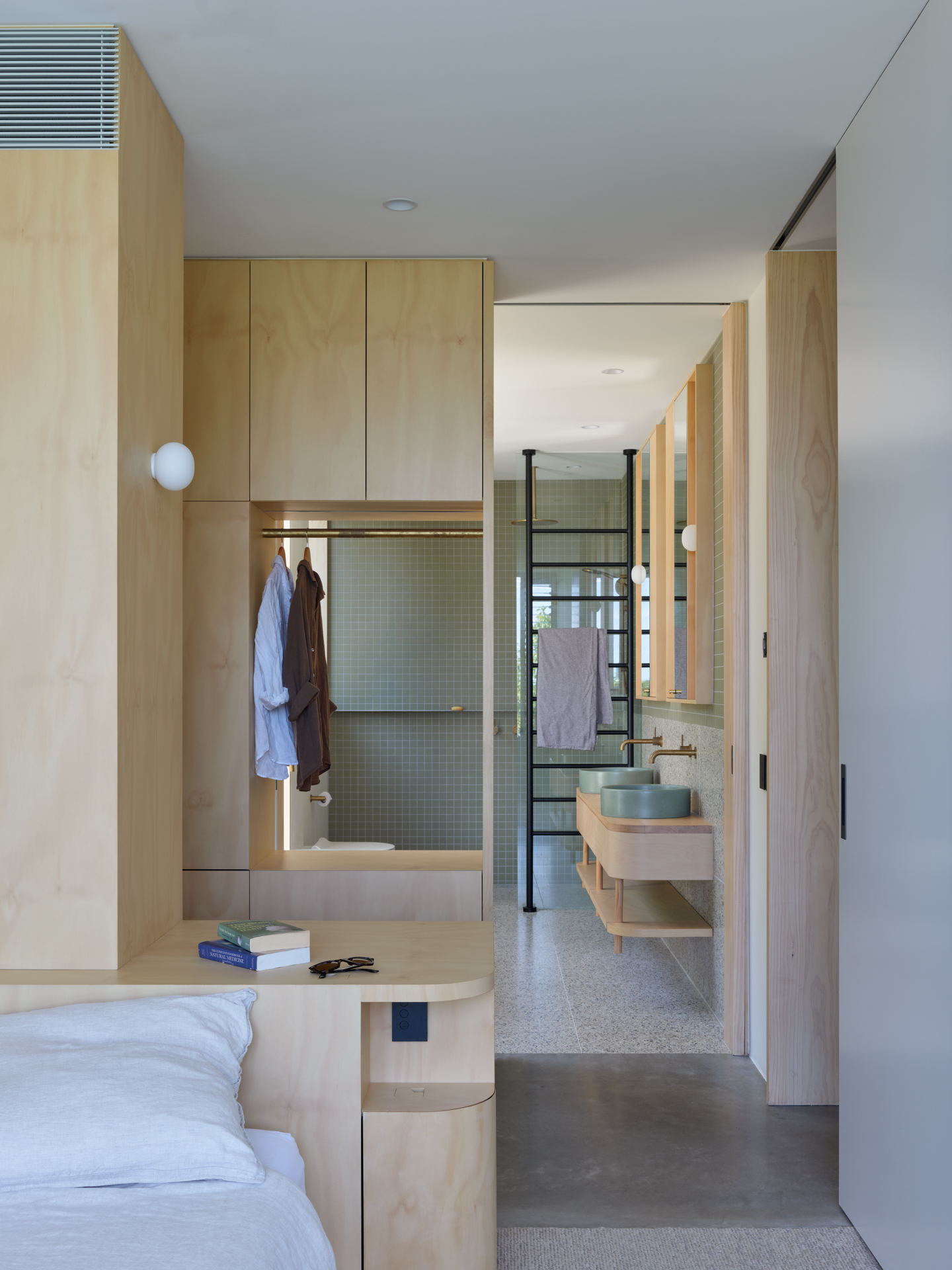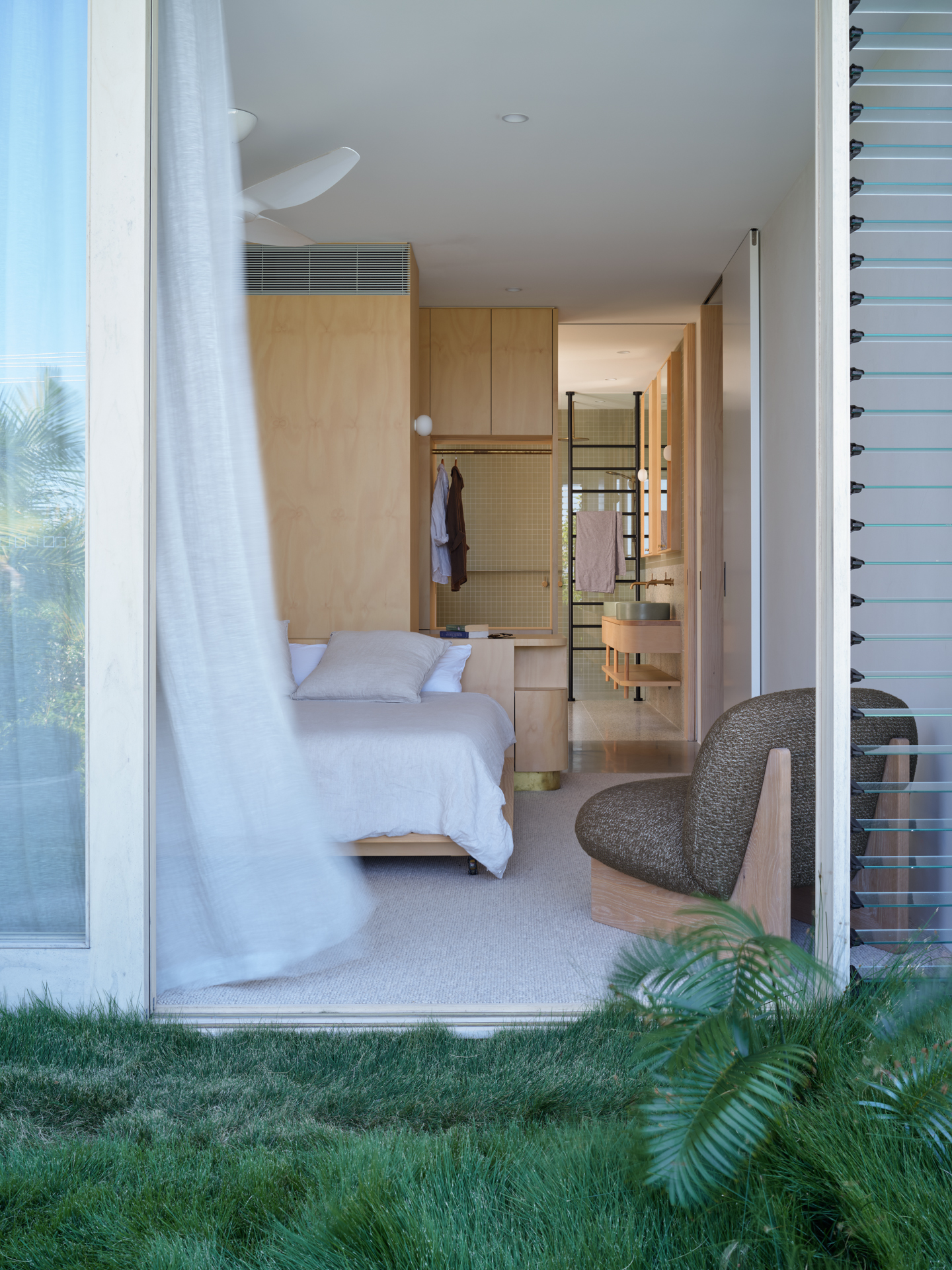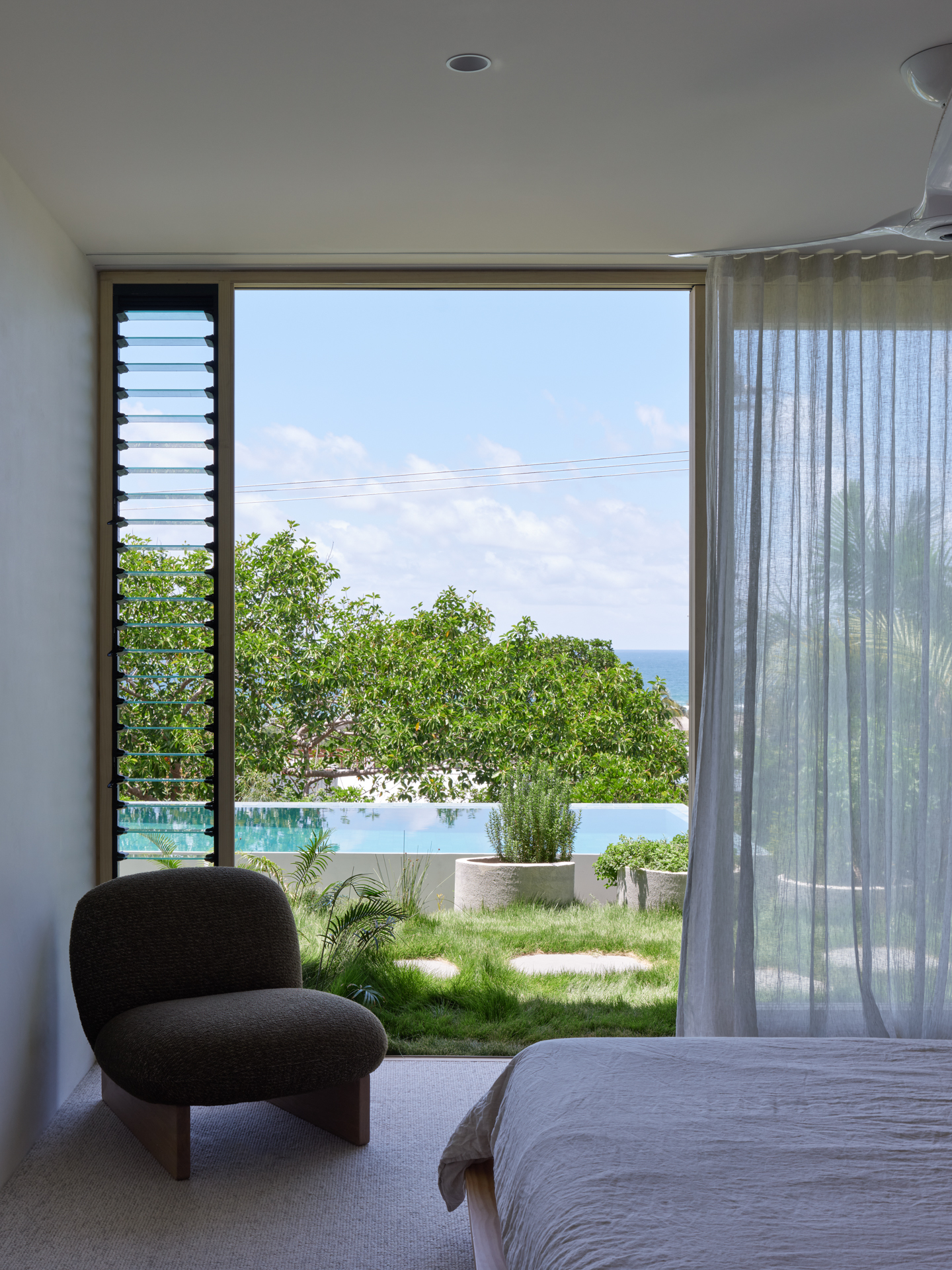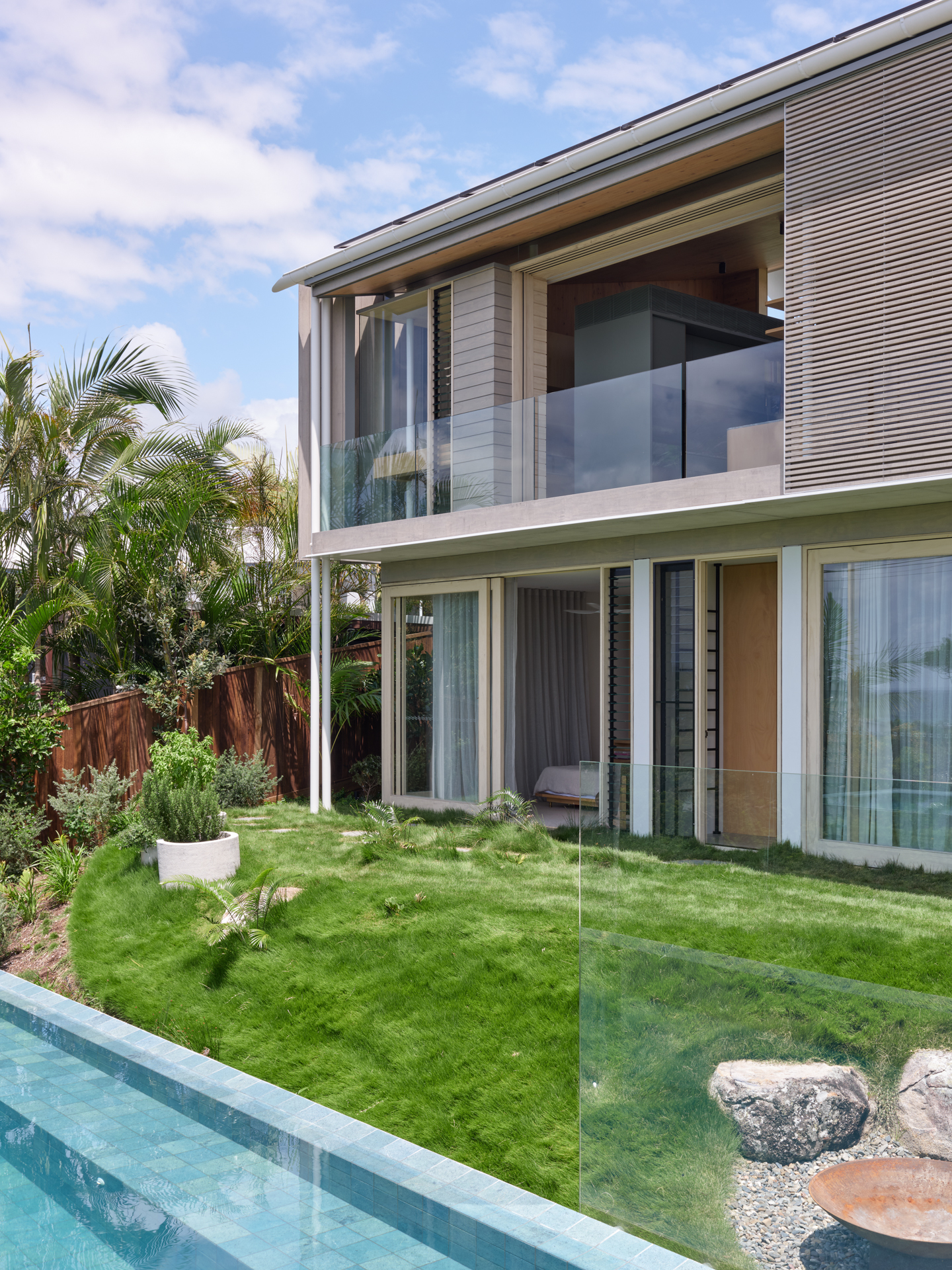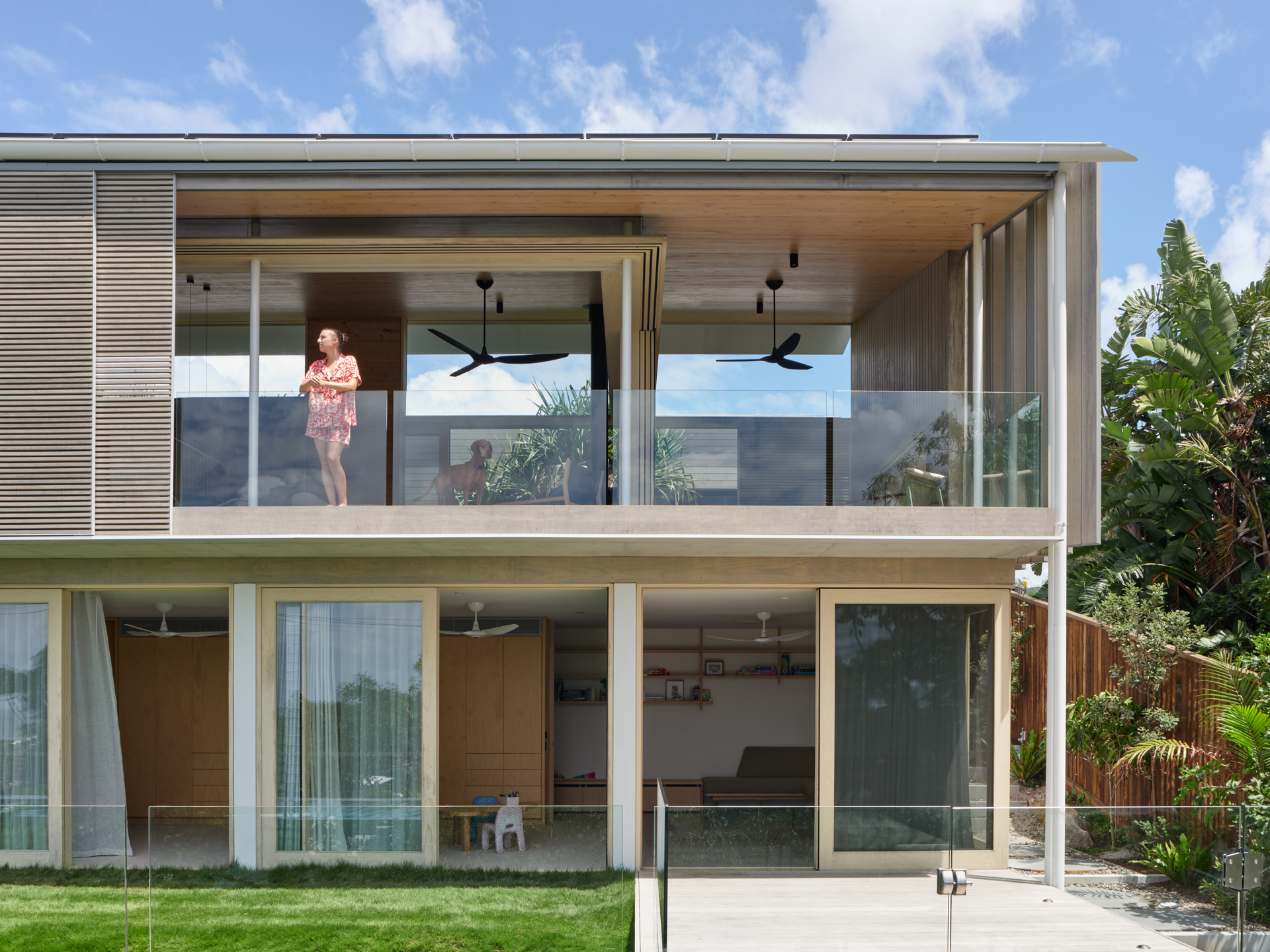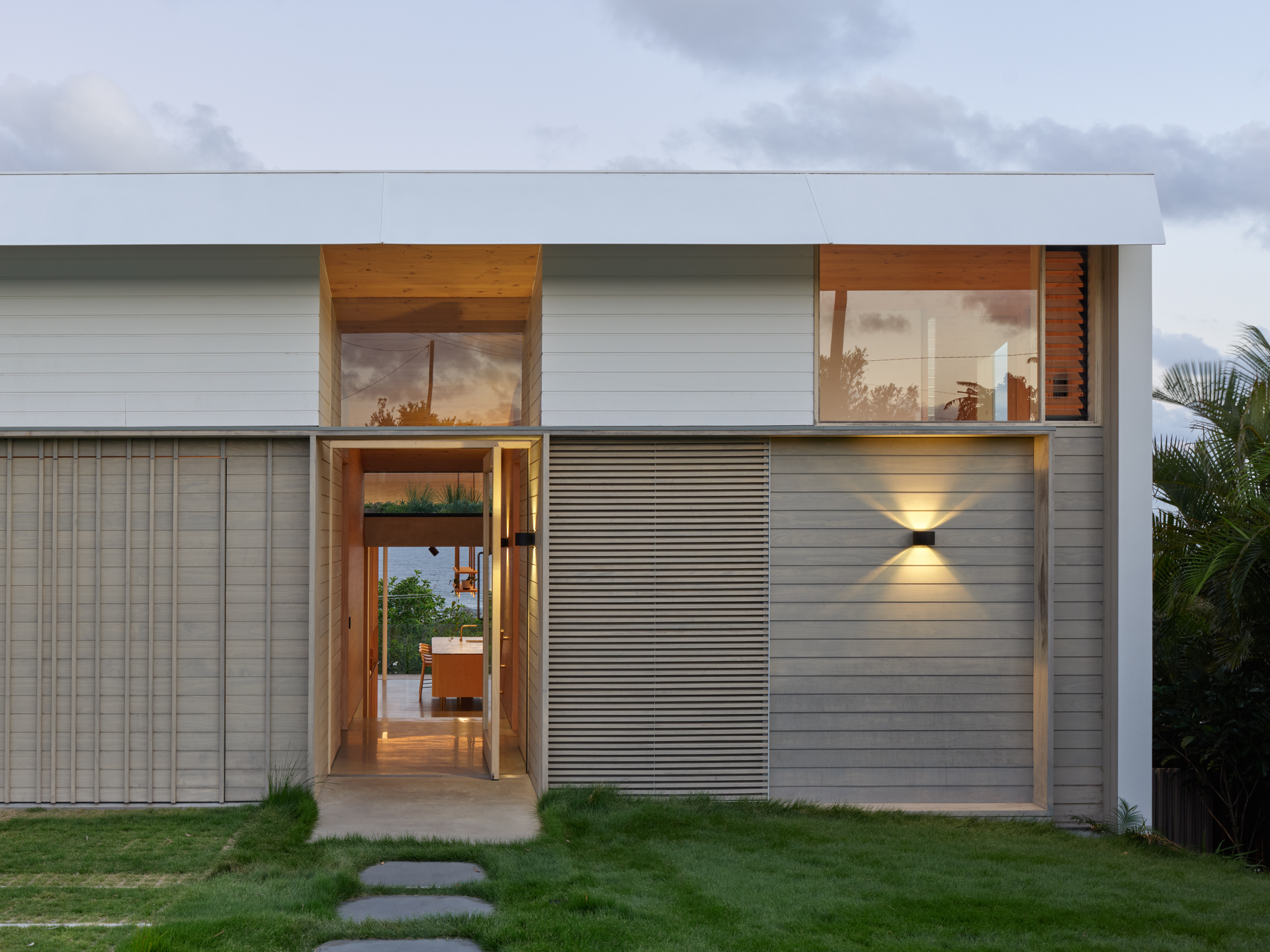Lyrebird is a beach house designed to accommodate the needs of a growing family and their beloved dogs.
The house harmoniously integrates with its natural surroundings, respecting the site’s contours and establishing a balanced relationship with the garden at ground level. Two slender east-facing pavilions are connected by a courtyard bridge, enhancing airflow and creating sheltered courtyard spaces to the north and south. The living area offers expansive views of open beaches, with strategically placed timber screens that allow for controlled light filtering, enabling the space to adapt to changing climatic conditions and user preferences.
The extensive native and endemic garden was meticulously designed and coordinated by the client, landscape architect, and architect.
The building combines mass timber construction techniques with traditional craftsmanship, hybridising methodologies to meet the client’s and site’s specific requirements. The exterior cladding features silvered pine white weatherboards and smooth render, referencing both the hues found in the natural landscape and a fresh and light beach house aesthetic. This layered combination of natural timber and texture is further expressed throughout the interiors via batten screening, timber walls and ceilings, lime rendered walls and joinery elements.
Prefabricated cross-laminated timber (CLT) panels were employed for various wall and roof elements, resulting in the rapid construction of walls and roofs within three working days. Beyond the evident construction time efficiencies attributed to the prefabricated panellised system, a substantial reduction in construction waste in and the significant carbon sequestration achieved through the CLT panels also contributed to the project’s positive impact on the environment, . The structural components serve as the finished surface, drawing inspiration from the Noosa region’s longstanding tradition of pine-lined beach houses. The materiality is notably robust and tactile, capable of enduring the demands of both the coastal environment and the growing family, while striking a harmonious balance between the hues of the immediate coastline and the surrounding national parks.
The lower ground level planning strategy ensures equal access to cooling ocean breezes. The generous stairwell facilitates the passage of these breezes through the two pavilions, with warm air venting through the high western clerestory louvres. Consequently, all rooms benefit from floor-to-ceiling glazing, providing ample access to natural light and airflow, thereby strengthening the connection with the garden and broader landscape without compromising on visual lines.
Natural ventilation and thermal mass is the primary mode of cooling for the house. However, on particularly humid days, bulkhead air conditioning units are powered by a 20 kW photovoltaic array. A combined 25,000 L of rainwater storage undergoes filtration and is distributed throughout the house and garden irrigation system. A generous pool provides a strong visual edge to the garden, screens the road below and further cools the north easterly summer breezes entering the home.
The clients shared a mutual appreciation for design, which led to their active involvement throughout design process. Their preference for material authenticity and longevity, coupled with their appreciation for bespoke detailing, was embraced by both the architect and builder, resulting in a highly productive and successful project.

